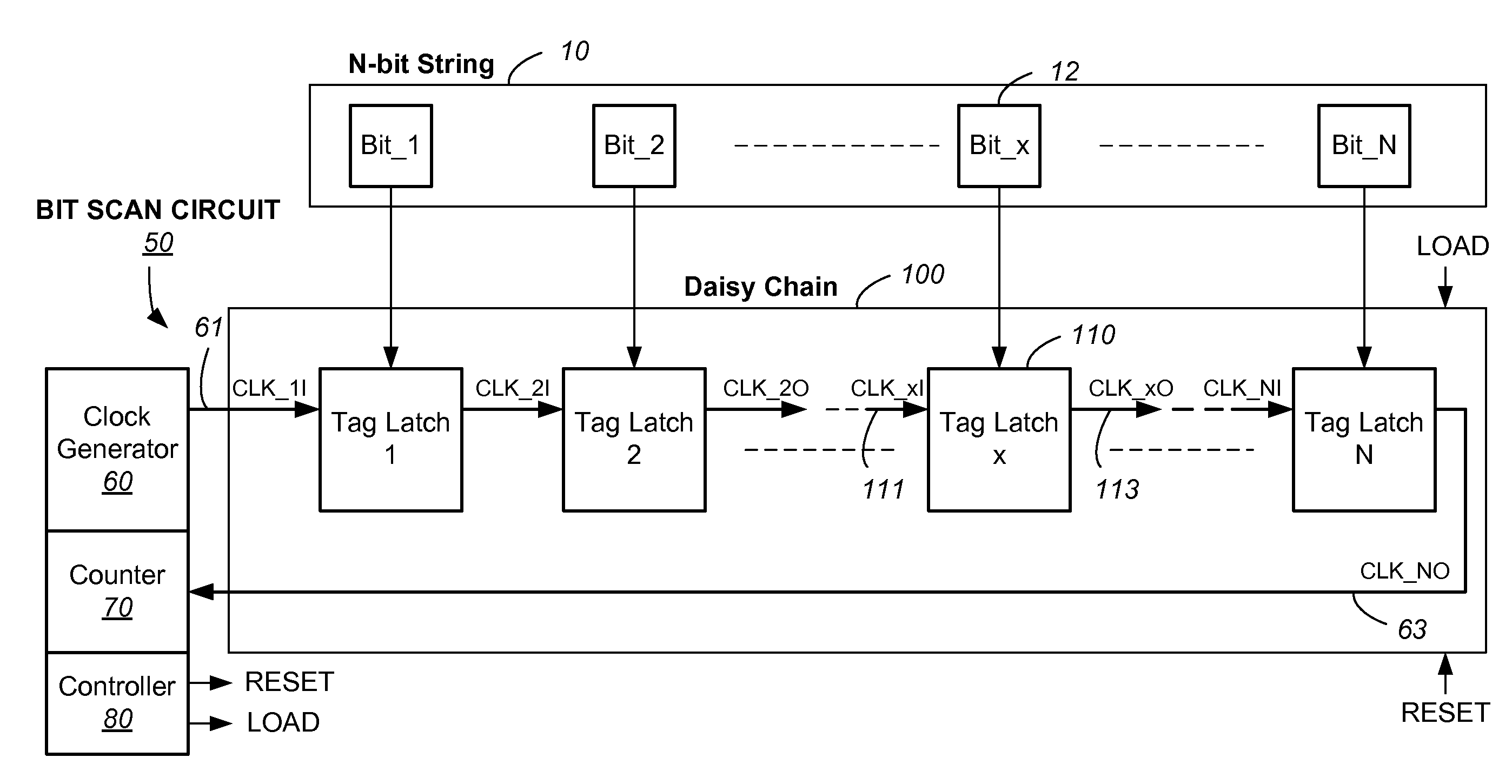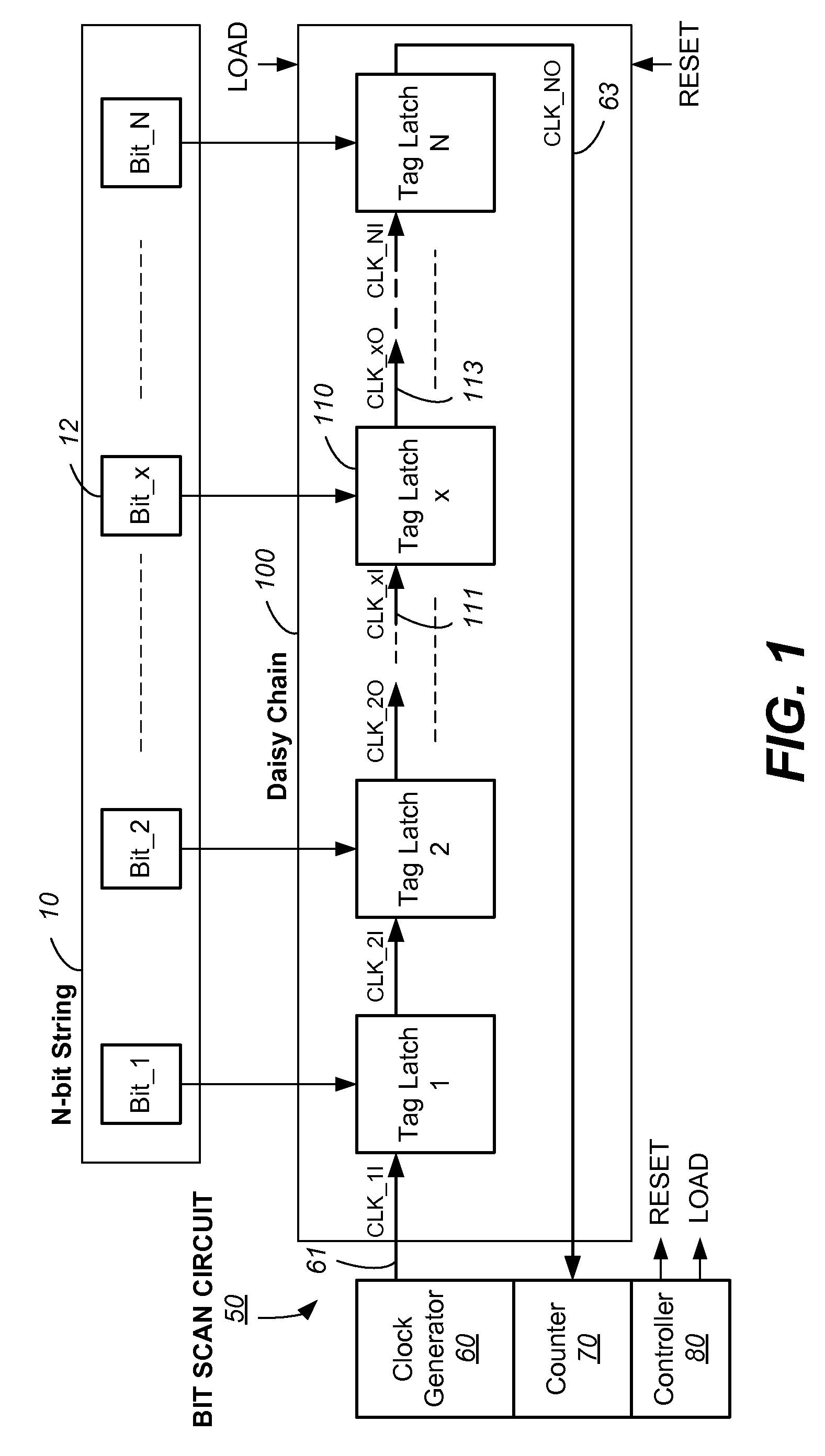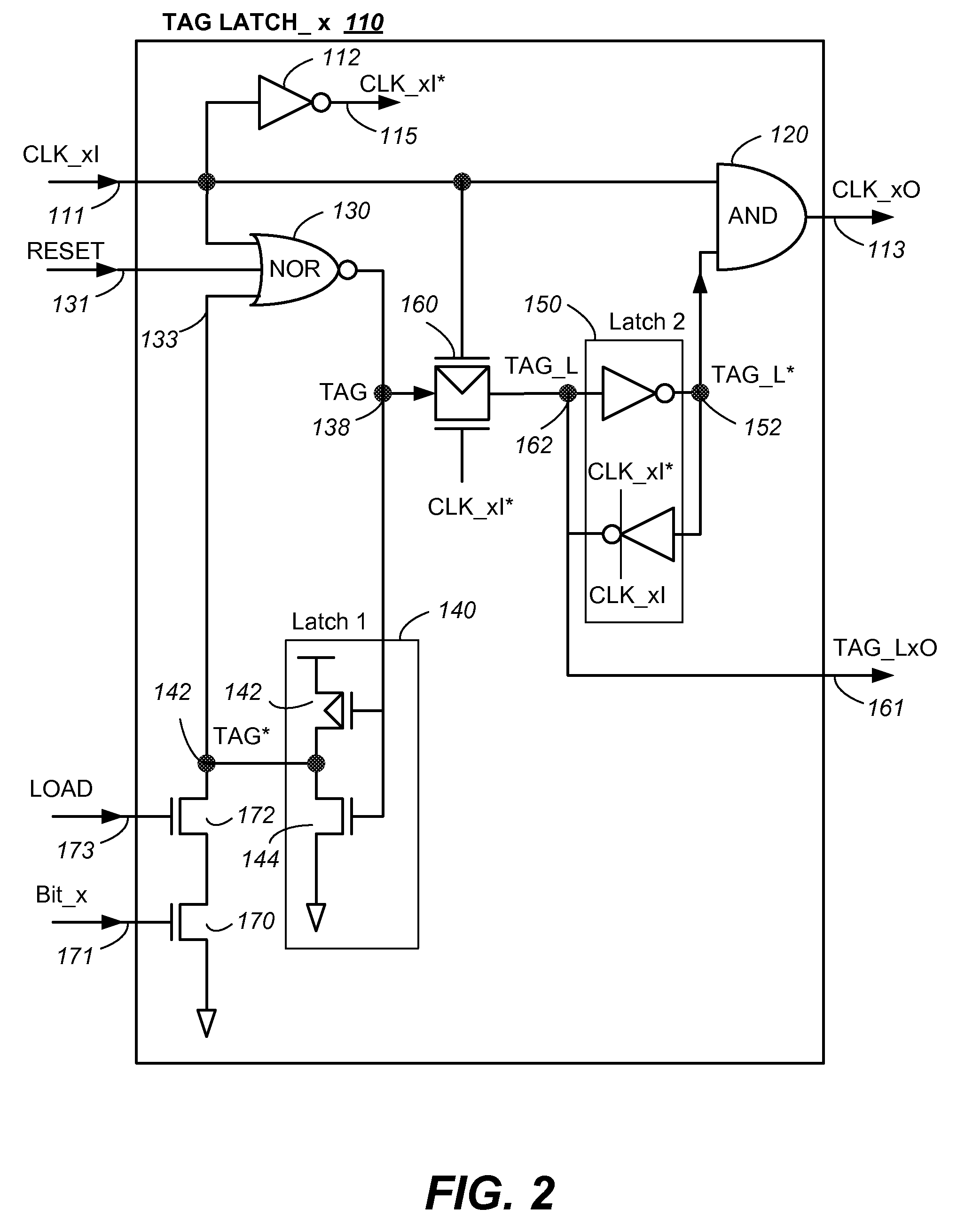Bit scan circuits and method in non-volatile memory
a non-volatile memory and bit scan technology, applied in the field of electronic circuits and methods, can solve the problems of unsuitable mobile and handheld environment, prone to mechanical failure, bulky disk drives, etc., and achieve the effect of simplifying circuits, improving the failure bit counting speed, and reducing layout siz
- Summary
- Abstract
- Description
- Claims
- Application Information
AI Technical Summary
Benefits of technology
Problems solved by technology
Method used
Image
Examples
Embodiment Construction
[0032]FIG. 1 illustrates a bit scan circuit according to one embodiment of the invention in which a gated clock signal is routed through a daisy chain of tag latches. The bit scan circuit 50 is employed to scan the number of “1”s and / or “0”s in an N-bit string 10. The bit scan circuit comprises N tag latches such as tag latch_1, tag latch_2, . . . , tag latch_x 110, . . . , tag latch_N. Each tag latch, such as tag latch_x 110 has a clock input CLK_xI 111 and a clock output CLK_xO 113. A daisy chain 100 is formed with the N tag latches daisy-chained together by their clock inputs and clock outputs.
[0033]The daisy chain 100 has an input end 61 which is the clock input of the first tag latch_1 and an output end 63 which is the clock output of tag latch_N. A clock generator 60 generates a clock signal CLK_1I which is input to the tag latch daisy chain 100 via the input end 61. The output end 63 of the daisy chain outputs a clock signal CLK_NO, which is fed back to a counter 70.
[0034]As ...
PUM
 Login to View More
Login to View More Abstract
Description
Claims
Application Information
 Login to View More
Login to View More - R&D
- Intellectual Property
- Life Sciences
- Materials
- Tech Scout
- Unparalleled Data Quality
- Higher Quality Content
- 60% Fewer Hallucinations
Browse by: Latest US Patents, China's latest patents, Technical Efficacy Thesaurus, Application Domain, Technology Topic, Popular Technical Reports.
© 2025 PatSnap. All rights reserved.Legal|Privacy policy|Modern Slavery Act Transparency Statement|Sitemap|About US| Contact US: help@patsnap.com



